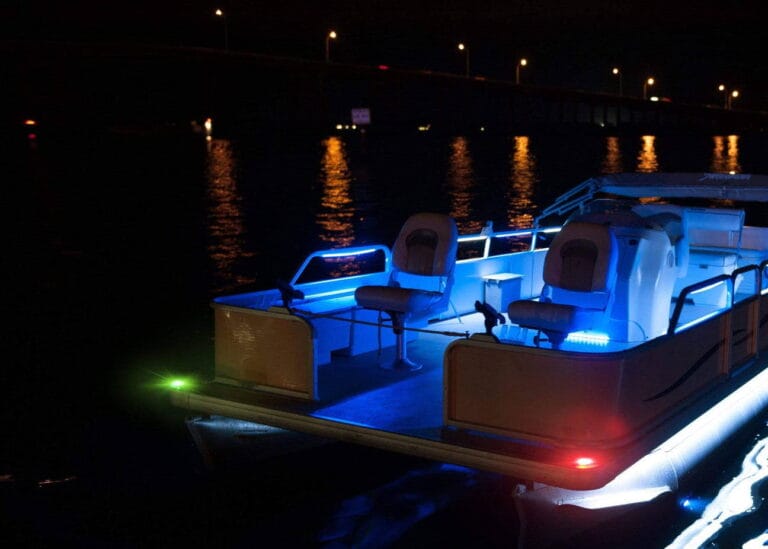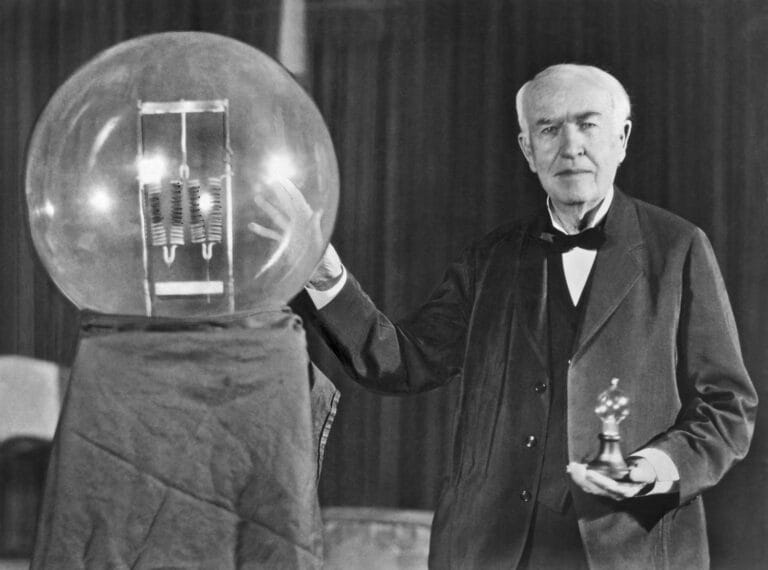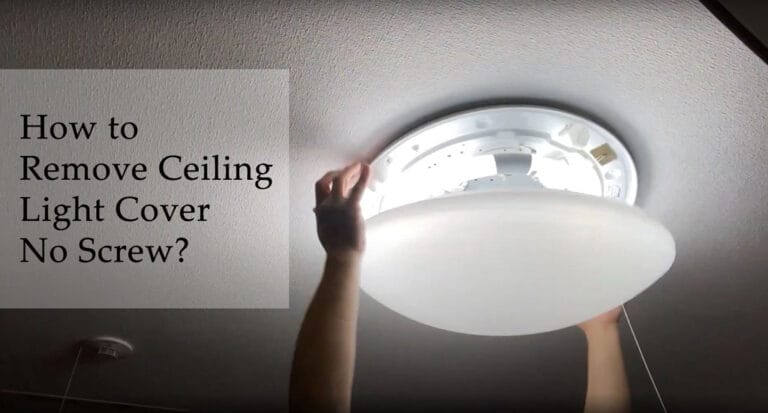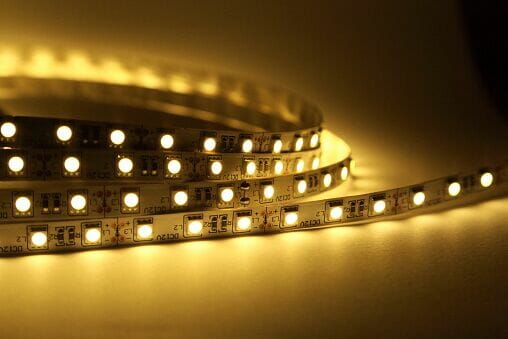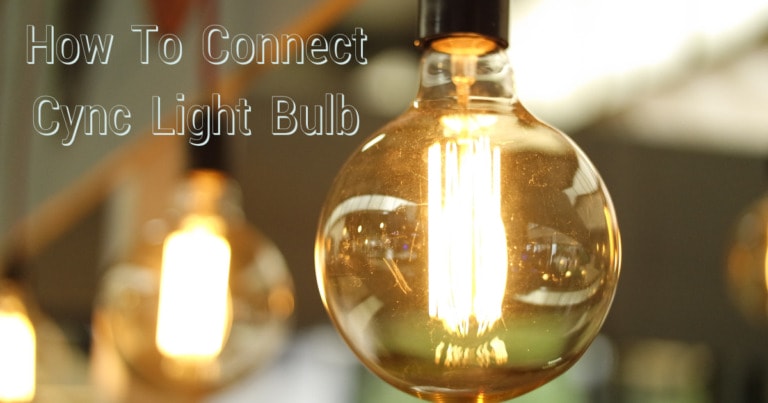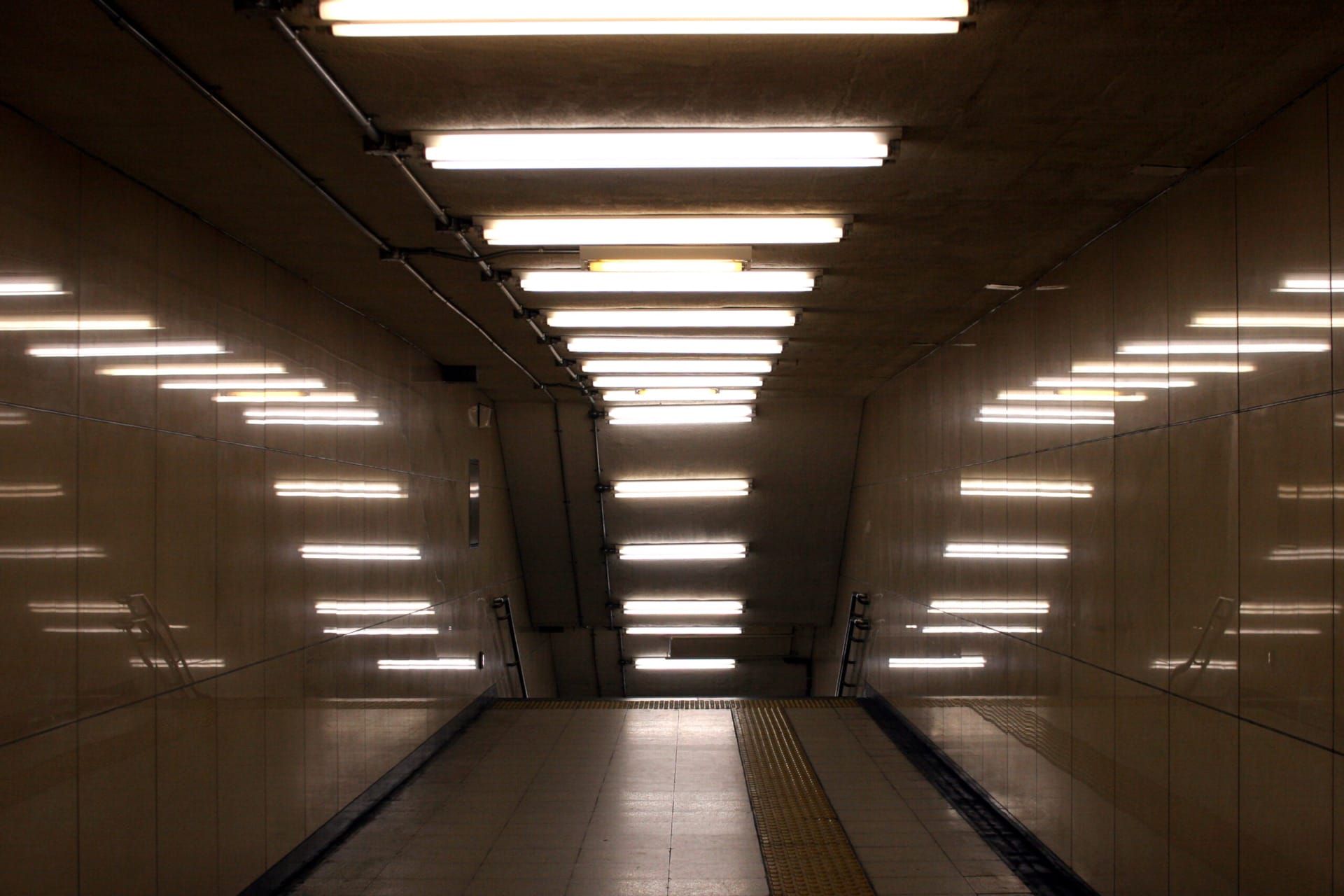
Have you ever wondered, “What is fluorescent light?” Well, you’re in the right place! Fluorescent light bulbs are something you’ve probably seen in schools, offices, or even your own home. They’re those long, tube-shaped bulbs that emit bright, white light. In this article, we’ll explore how fluorescent light works and why it’s so widely used. So, let’s dive in and shed some light on this illuminating topic!
Fluorescent light works fascinatingly. Inside the tube, there’s a special gas that, when electricity passes through it, produces ultraviolet (UV) light. This UV light can’t be seen by our eyes, so to make it visible, a special coating called phosphor is applied inside the tube. When the UV light interacts with the phosphor, it transforms into visible light. That’s why fluorescent bulbs give off that distinctive bright glow!
Now, you might be wondering why fluorescent light is so popular. Well, there are a few reasons. Firstly, fluorescent bulbs are incredibly energy efficient compared to traditional incandescent bulbs. They require much less electricity to produce the same amount of light, which means lower electricity bills!
Additionally, they have a longer lifespan, meaning they last much longer before needing to be replaced. So, not only do fluorescent lights save energy, but they also save you money in the long run. How cool is that?
So, there you have it! Fluorescent light bulbs are a popular choice for lighting up spaces because they’re energy-efficient, long-lasting, and emit bright, white light. If you want to learn more about how fluorescent light works and its different applications, keep reading. Get ready to brighten up your knowledge on this illuminating subject!
What is Fluorescent Light?
Fluorescent lighting is a popular choice for many homes and businesses. Known for its energy efficiency and long lifespan, it offers bright, consistent illumination. These lights work by passing an electric current through a tube filled with mercury vapor, which then emits ultraviolet light.
This light is then converted into visible light by the phosphor coating on the tube. With its environmental benefits and cost-effective qualities, fluorescent lighting is a top choice for many lighting needs.
How Does Fluorescent Light Work?
Fluorescent light bulbs consist of several key components that work together to produce illumination. The main parts include the glass tube, the electrodes, the mercury vapor, and the phosphor coating.
When the electrical current is applied, it excites the electrons within the electrodes, causing them to emit electrons into the tube. These electrons collide with the mercury vapor, causing it to release UV light. The UV light then interacts with the phosphor coating, stimulating it to emit visible light.
The color of the light emitted depends on the composition of the phosphor coating.
Fluorescent light bulbs also contain a ballast, which regulates the electrical current flowing through the bulb. Ballasts are necessary to ensure the correct amount of energy is supplied to the bulb and to prevent flickering and premature failure.
Advantages of Fluorescent Light
Fluorescent light offers several advantages over traditional incandescent bulbs. Firstly, fluorescent bulbs are much more energy-efficient, producing more light for the same amount of energy. This efficiency translates into cost savings and reduced environmental impact.
Secondly, fluorescent light bulbs have a significantly longer lifespan than incandescent bulbs. While incandescent bulbs typically last around 1,000 hours, fluorescent bulbs can last up to 10,000 hours or more. This means less frequent bulb replacements and reduced maintenance costs.
Additionally, fluorescent light produces less heat compared to incandescent bulbs. This makes them safer to use, especially in areas where heat could pose a fire hazard. It also makes them a more efficient option for cooling systems, as there is less wasted energy in the form of heat.
Common Applications of Fluorescent Light
Fluorescent light is widely used in various settings due to its numerous benefits. Some common applications include:
1. Office Lighting: Fluorescent light fixtures are commonly found in offices and commercial buildings. They provide bright, even illumination to enhance productivity and create a comfortable workspace.
2. Residential Lighting: Compact fluorescent lamps (CFLs) are commonly used in homes as energy-efficient alternatives to traditional incandescent bulbs. They are available in a wide range of sizes and color temperatures to suit different lighting needs.
3. Industrial Lighting: Fluorescent light fixtures are commonly used in warehouses, factories, and other industrial settings due to their high luminosity and energy efficiency.
4. Retail Lighting: Fluorescent light is frequently used in retail environments to highlight products and create an appealing shopping atmosphere.
5. Schools and Universities: Fluorescent lighting is used in educational settings to provide bright, uniform illumination for classrooms, hallways, and other areas.
6. Healthcare Facilities: Fluorescent light fixtures are often employed in hospitals and clinics due to their high color rendering index (CRI), which allows for accurate color representation and precise visual examination.
7. Street Lighting: Some cities and municipalities use fluorescent lighting for street and outdoor illumination due to its energy efficiency and long lifespan.
Fluorescent light provides a versatile and efficient lighting solution for a wide range of applications, making it a popular choice in both residential and commercial settings.
How to Choose the Right Fluorescent Light Bulb
When selecting a fluorescent light bulb, there are several factors to consider to ensure you choose the right one for your needs. These factors include bulb type, color temperature, and bulb length.
Bulb Type
There are various types of fluorescent bulbs available, each designed for specific purposes. The two main types are linear fluorescent tubes and compact fluorescent lamps (CFLs).
Linear fluorescent tubes are commonly used in commercial and industrial settings and come in different lengths and diameters. CFLs, on the other hand, are smaller and more compact, making them suitable for residential use.
Linear Fluorescent Tubes
Linear fluorescent tubes are categorized based on their diameter and length. Common sizes include T5, T8, and T12.
– T5 tubes have a diameter of 5/8 inches and are known for their high efficiency and excellent color rendering. They are commonly used in spaces that require high-quality illumination, such as offices and retail stores.
– T8 tubes have a diameter of 1 inch and are widely used in many applications, from residential lighting to commercial settings.
– T12 tubes have a diameter of 1.5 inches and are less efficient than T5 and T8 tubes. However, they are still commonly used in certain applications, especially in older fixtures that are not compatible with T5 or T8 tubes.
When choosing a linear fluorescent tube, consider the fixture compatibility and the desired level of illumination.
Compact Fluorescent Lamps (CFLs)
CFLs are smaller, self-contained fluorescent bulbs that are often used as direct replacements for traditional incandescent bulbs. They come in various shapes and sizes and can be used in a wide range of lighting fixtures.
When selecting a CFL, consider the desired color temperature, wattage equivalency (to incandescent bulbs), and the desired level of illumination. CFLs are available in warm, neutral, and cool color temperatures, allowing you to create the desired ambiance in your space.
Color Temperature
Fluorescent bulbs come in various color temperatures, which impact the perceived “warmth” or “coolness” of the light emitted. Color temperature is measured in Kelvin (K), and the most common ranges for fluorescent bulbs are:
– Warm White: 2700K-3000K – Similar to the warm, yellowish hue of incandescent bulbs, this color temperature is commonly used in residential settings and areas where a cozy ambiance is desired.
– Cool White: 3500K-4100K – This color temperature falls between warm and cool tones. It is often used in commercial settings, such as offices and retail spaces, where a balance between warm and cool lighting is required.
– Daylight: 5000K-6500K – This color temperature mimics natural daylight and is associated with a cool, bluish-white light. It is commonly used in areas where accurate color representation is crucial, such as art studios or medical examination rooms.
Consider the function and desired ambiance of the space when choosing the right color temperature for your fluorescent light bulb.
Bulb Length
The length of a fluorescent bulb is an essential consideration, especially when replacing existing fixtures or retrofitting lighting systems. The bulb length should match the specifications of the fixture to ensure proper installation and optimal lighting performance.
Common lengths for linear fluorescent tubes include 2 feet, 4 feet, and 8 feet.
Before purchasing a fluorescent bulb, measure the existing fixture or consult the manufacturer’s guidelines to determine the appropriate bulb length.
Types of Fluorescent Light Fixtures
Fluorescent light fixtures come in a variety of styles, each designed for specific purposes and installation requirements. Some common types of fluorescent light fixtures include:
1. Recessed Troffers
Recessed troffers are common in commercial and institutional settings. They are installed in a grid pattern in suspended ceilings, creating a seamless and uniform lighting distribution.
These fixtures are popular due to their efficiency and versatility, as they can accommodate different lamp configurations and provide wide-area illumination.
2. High Bay Fixtures
High bay fixtures are specifically designed for illuminating high-ceiling spaces, typically found in warehouses, manufacturing facilities, and gymnasiums. They produce high levels of illumination and are designed to distribute light evenly over large areas.
These fixtures are installed at a higher elevation and usually come with reflectors to direct the light downward, providing optimal illumination for the space below.
3. Surface-Mounted Fixtures
Surface-mounted fixtures are versatile lighting solutions that can be installed on walls or ceilings. They are commonly used in residential applications, retail spaces, and corridors.
These fixtures come in various shapes and sizes, providing functional and decorative lighting options for different settings.
4. Under Cabinet Lights
Under cabinet, lights are commonly used in kitchens and other areas where task lighting is required. These fixtures are installed underneath cabinets, providing focused illumination for countertop activities.
They come in linear forms and can be connected end-to-end to cover a larger workspace.
5. Pendant Lights
Pendant lights are decorative lighting fixtures that hang from the ceiling on a chain or rod. While they come in various styles and designs, some pendant lights use fluorescent bulbs for energy-efficient illumination.
These fixtures are popular in residential settings, restaurants, and other areas where a statement lighting piece is desired.
How to Maintain Fluorescent Light Fixtures
Proper maintenance and cleaning are essential to ensure optimal performance and longevity of fluorescent light fixtures. Here are some tips for maintaining your fluorescent light fixtures:
1. Regular Cleaning
Dust and debris can accumulate on the surface of fluorescent light fixtures, reducing their light output and overall efficiency. Regular cleaning is necessary to remove dirt and maintain optimal performance.
To clean the fixture, switch off the power and gently remove the diffuser or cover. Clean the surface with a soft cloth dampened with a mild cleaning solution or water and mild soap. Ensure the fixture is completely dry before reinstalling the diffuser or cover.
2. Check and Replace Bulbs
Monitor the performance of your fluorescent bulbs and replace any that are flickering, not illuminating fully, or reaching the end of their lifespan. Bulbs that are nearing the end of their life may appear dimmer, take longer to reach full brightness, or emit a different color temperature.
When replacing bulbs, ensure they are compatible with the fixture and have the correct wattage and length. Follow the manufacturer’s instructions for proper installation.
3. Inspect Ballasts and Wiring
Regularly inspect the ballasts and wiring of your fluorescent light fixtures to ensure they are functioning correctly and free of damage. Look for any signs of wear, loose connections, or damaged components. If any issues are found, consult a qualified electrician for repairs or replacement.
4. Keep the Surrounding Area Clear
Fluorescent light fixtures generate heat during operation. To prevent potential hazards, ensure the area around the fixtures is clear of any flammable materials or obstructions. This will help maintain proper airflow and reduce the risk of overheating.
Fluorescent light is a versatile and energy-efficient lighting option that offers numerous benefits for various applications. Whether used in homes, offices, or industrial settings, fluorescent light provides bright, uniform illumination, cost savings, and reduced environmental impact.
When choosing fluorescent light bulbs, consider factors such as bulb type, color temperature, and bulb length to ensure the right fit for your specific lighting needs. Additionally, proper maintenance, regular cleaning, and timely bulb replacements will help maximize the lifespan and performance of your fluorescent light fixtures.
By understanding the mechanisms behind fluorescent light and utilizing the right fixtures and bulbs, you can create a well-lit and energy-efficient environment that meets your lighting requirements.
Frequently Asked Questions
Welcome to our FAQ section where we will dive into the fascinating world of fluorescent light and answer some common questions about this type of lighting.
Why is fluorescent light called that?
Fluorescent light gets its name from the process of fluorescence that occurs within the bulb. The bulb contains a gas mixture, and when an electric current passes through it, the gas emits ultraviolet (UV) light. This UV light interacts with a phosphor coating on the inside of the bulb, causing it to glow and produce visible light.
This fluorescence-based mechanism sets fluorescent lighting apart from other types of lighting, such as incandescent or LED, which rely on different principles to produce light. The unique process of fluorescence is what gives fluorescent light its distinctive name!
How does fluorescent light save energy?
Fluorescent light bulbs are known for their energy efficiency compared to traditional incandescent bulbs. This is because fluorescent bulbs use a different method to generate light. In an incandescent bulb, electricity passes through a tungsten filament to create light.
However, this process also produces a significant amount of heat, causing energy loss. In contrast, fluorescent bulbs convert most of the electricity they receive into visible light rather than heat, making them much more energy-efficient.
Additionally, fluorescent bulbs contain a gas that facilitates the fluorescence process. This gas helps the bulb emit more light for the same amount of energy, further increasing its efficiency. As a result, fluorescent light bulbs use significantly less energy while providing the same or even greater brightness compared to incandescent bulbs, translating into energy and cost savings over time.
Are there different types of fluorescent light bulbs?
Yes, there are different types of fluorescent light bulbs available, each with its unique characteristics. The most common types include linear fluorescent tubes and compact fluorescent lamps (CFLs). Linear fluorescent tubes are long, tubular bulbs often found in commercial settings, while CFLs are smaller and more commonly used in residential applications.
Furthermore, within these broad categories, there are variations in light color, brightness levels, and sizes. Some fluorescent bulbs emit warm white light similar to incandescent bulbs, while others have a cooler, bluish-white light. The choice of the specific type of fluorescent bulb will depend on the intended use and personal preferences regarding light quality and appearance.
Can fluorescent light be used outdoors?
Yes, fluorescent light can be used outdoors, but it requires the appropriate fixtures and bulbs. Outdoor fluorescent lighting can provide a bright, energy-efficient solution for illuminating walkways, patios, or gardens. However, it’s important to use fluorescent bulbs specifically designed for outdoor use, as they are better equipped to withstand exposure to the elements.
When selecting outdoor fluorescent fixtures, it’s crucial to choose ones labeled as weather-resistant or suitable for outdoor installation. These fixtures are designed to protect the bulbs from moisture, dust, and other outdoor factors that may impact their performance. By selecting the right equipment and bulbs, fluorescent lighting can be a reliable and environmentally friendly option for outdoor illumination.
Is it difficult to replace a fluorescent light bulb?
Replacing a fluorescent light bulb is relatively straightforward. Start by turning off the power supply to the fixture or switching it off at the circuit breaker. Allow the bulb to cool down if it has been in use recently, as fluorescent bulbs can become hot. Gently twist the bulb counterclockwise until it releases from the socket. Insert the new bulb by twisting it clockwise until it is securely in place. Finally, restore power to the fixture and switch it on to test the new bulb.
It’s worth noting that certain types of fluorescent fixtures, such as those in commercial settings or integrated lighting systems, may require different procedures for replacement. In such cases, it’s best to consult the manufacturer’s instructions or seek assistance from a professional electrician to ensure a safe and correct bulb replacement.
Fluorescent light bulbs are a type of energy-efficient lighting that works differently from traditional incandescent bulbs. Inside a fluorescent bulb, electricity is used to produce ultraviolet light, which then interacts with a special coating to create visible light.
These bulbs are more efficient because they use less energy to produce the same amount of light, and they also last longer than incandescent bulbs. However, fluorescent lights contain small amounts of mercury, so it’s important to handle and dispose of them properly to protect the environment. In conclusion, fluorescent lights are a great option for saving energy, but we must be careful with their disposal.

